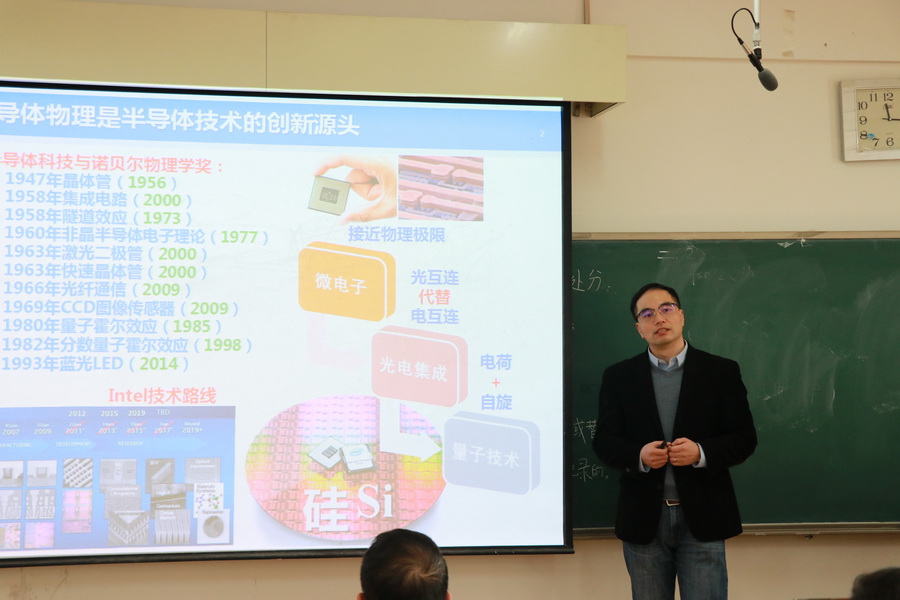
Luo Junwei, a researcher with the Institute of Semiconductors at the CAS, presents his report to the IMU’s School of Physical Science and Technology in Hohhot, capital of North China’s Inner Mongolia autonomous region, on Jan 3. [Photo/imu.edu.cn]
The School of Physical Science and Technology at Inner Mongolia University (IMU) in Hohhot, capital of North China’s Inner Mongolia autonomous region, invited Luo Junwei -- a researcher from the Institute of Semiconductors of the Chinese Academy of Sciences -- to make report on Jan 3, according to IMU officials.
Interested in the topic of integrated silicon-based light sources in silicon chips, the report attracted the participation of over 50 IMU teachers, graduates and undergraduates.
In his report, Luo Junwei explained that the realization of silicon-based luminescence is the key to the development of integrated optoelectronic technology -- an international problem that has lasted for half a century.
He also discussed theoretical and experimental work in the field of silicon-based luminescence that the research group is focusing on – involving CMOS, or Complementary Metal Oxide Semiconductors, a technology used to produce integrated circuits.
After the report, IMU teachers and students discussed with Luo the theoretical and experimental difficulties in the realization of silicon-based luminescence.

